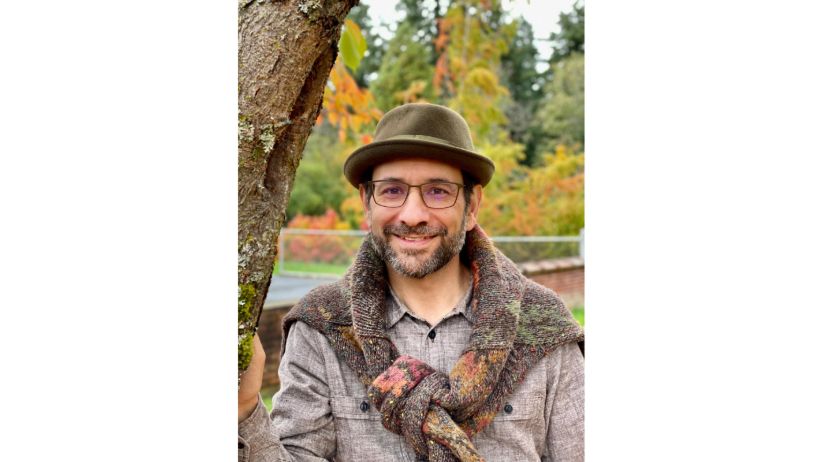Turn It Again: Torah Wisdom for Today
In Pirkei Avot, a book of maxims in the Mishnah, an ancient rabbi, Ben Bag-Bag said about Torah study, “Hafokh bah, va’Hafokh vah, d’khola bah.” Turn it over and over, for everything is in it. For two thousand years, that’s what Jews have done. Here is another turning.
ILLNESS OPENS A GATE
Nobody wants to be sick, yet there is a way that illness opens a gate to greater understanding; sometimes, when we choose to walk through, we might even encounter divinity. I was twenty-two or so when the ACL on my right knee went out, while living in New Mexico. In those days, recuperation was a long bed-ridden process; there was little I could do for myself. Having worked intently to gain my independence, this setback was not easy. It necessitated a return to my parents; house in New York, which felt like a personal failure. Living on one’s own was considered an important developmental milestone back then. In its place, I had to learn to accept with grace my new dependence. We are always interconnected, even when we don’t want to be. This was the gate of understanding.
In Cleveland, I watched how a congregant, Honey, was transformed by her cancer. As a hard charging entrepreneur and businesswoman, she was always looking for an advantage; people often experienced a sharp edge when interacting with her. Over the course of her final year, that part of her identity slipped away as she steadily was reshaped into a luminous, radiant being. Her family marveled at this transition almost as much as Honey did. This was the gate of divinity.
In Parshat Metzora, we see an expansion of this dynamic portrayed in the case of an individual stricken with Biblical leprosy. In an early form of quarantine, someone so afflicted had to leave the main camp for a period of days. Was this a form of ostracism, of public safety, or a growth opportunity for the leper? It has been imagined in countless ways, for periods of isolation affect us all differently. In the sharp life of illness, we discover another side to ourselves, which is not always pretty.
After the requisite days of quarantine had passed, a priest would visit. In Leviticus 14:2-3, we read, “This shall be the ritual for a leper at the time of being purified. When it has been reported to the priest, the priest shall go outside the camp…” (The Contemporary Torah, JPS, 2006).
Rashi, the preeminent Jewish Biblical interpreter, because of his deep mastery of the rabbinic literary corpus, spells this out, noting that the priest left the main settlement and went “…outside to the three camps to where he (the leper) had been sent during the days he was decidedly a leper” (trans. by M. Rosenbaum and A.M. Silbermann, London, 1929-1934). Rashi is drawing on older traditions found in the Talmud, as explained by Shabbetai ben Joseph Bass, a 17th century author from Amsterdam:
“The three camps are: The camp of the Shekhina (Divine Presence), from the entrance to the courtyard and within. From the entrance to the courtyard to the entrance to the Temple Mount is the camp of the Levites, and from the entrance of the Temple Mount until the city gate is the third camp (of the Israelites). Beyond the city gate is outside of the three camps” (trans. by David Kosak, 2024).
What we learn from this lesser-known piece of early Israelite history is not only that there were different locations where people could recover, but that one of these, the camp of the Shekhina, was a place of tremendous holiness, suffused with the divinity of God’s earthly presence. In other words, some of our most physically vulnerable ancestors were given pride of place in their recovery, literally stationed by the gate of divinity.
A later teaching comes from one of the fundamental texts of Polish Hasidic thought, the 19th century workTiferet Shlomo, which expands this insight by explaining that the reason the priest went to visit the ill in these three camps was “to raise [the sick] upwards, and therefore the priest left the main camp [to visit the ill in order to] raise them up with all of his Torah[1]” (trans. David Kosak 2024). It is unclear if there is a historic base to this claim, but even if we accept this merely as a later interpretation, it expands our understanding of illness and healing, highlighting a very different aspect of both quarantine and illness, emphasizing that those who are frail deserve our best wisdom.
Last week in Parshat Tazria, we focused on how our approach to our illness determines whether we can learn or grow from it. This week, we are reminded that the community also has a role in establishing a set of protocols that make this sort of growth more likely. We are left to ask ourselves, what can we do as individuals and communities to make these gates of understanding and divinity more accessible to those who are dealing with serious illness?
[1] לעלות למעלה ולכך ויצא הכהן אליו אל מחוץ למחנה להעלותו עם כל תורתו




